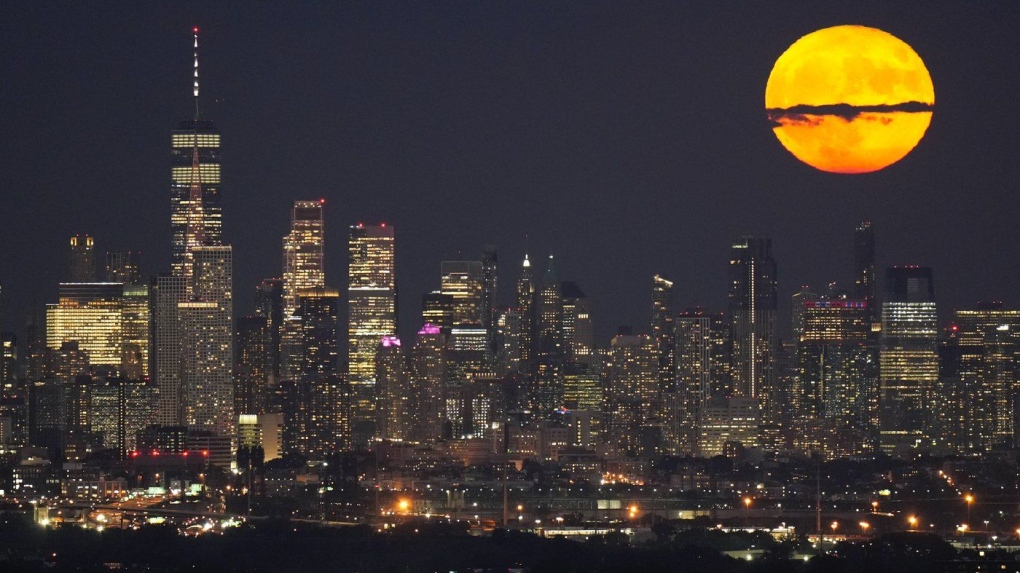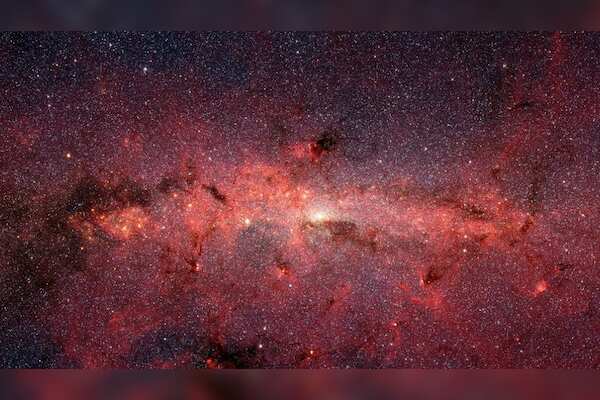NASA's James Webb Space Telescope (JWST) has recently captured a breathtaking image of a distant nebula known as N79, located 1630 light years away from our Milky Way galaxy. This active star-forming region is a sight to behold, with yellow, orange, and blue ribbons of light creating a mesmerizing spectacle in the cosmic expanse. The N79 nebula, with its vibrant colors and celestial beauty, remains largely unexplored by astronomers, making it a prime target for scientific study and observation.
The image captured by the JWST showcases the intricate details of this distant nebula, revealing the ongoing process of star formation within its cosmic boundaries. The Twitter post by NASA Webb Telescope emphasizes the ethereal nature of N79, likening the star-forming region to a place of darkness giving way to the dawn of new stars. The image captured by the Webb telescope showcases the glowing gas and dust within the nebula, as well as the emergence of young stars deeply embedded within the cosmic clouds. N79 is often referred to as the younger sibling of the Tarantula Nebula, a massive star-forming region located 161,000 light years away from Earth. Scientists have noted that N79 is forming stars at a rate twice that of the Tarantula Nebula, also known as 30 Doradus, making it a significant area of study for astronomers. The image captured by JWST focuses on three distinct complexes of cold atomic gas within N79, with particular emphasis on the starburst pattern surrounding the central core of the nebula. This pattern, created by diffraction spikes from the telescope's primary mirror, highlights the intense star formation activity within the region. The Mid-InfraRed Instrument (MIRI) onboard the JWST played a crucial role in capturing the image of N79, allowing astronomers to peer deep into the star-forming region and uncover hidden proto-stars still shrouded in gas and dust. These youthful stellar bodies represent the early stages of star formation, providing valuable insights into the processes that give birth to new stars in the cosmos. Studying regions like N79 with the JWST enables scientists to unravel the mysteries of star formation and better understand the composition of gas and dust clouds in the early universe. By analyzing these cosmic nurseries where stars are born, researchers can gain key insights into the evolution of galaxies and the fundamental processes that shape our universe. In conclusion, the image of N79 captured by the James Webb Space Telescope offers a glimpse into the dynamic and mesmerizing world of star formation in distant galaxies. With its advanced technology and cutting-edge capabilities, JWST continues to push the boundaries of astronomical exploration, revealing the beauty and complexity of the cosmos for all to marvel at.Exploring the Marvels of N79: NASA's James Webb Space Telescope Captures Stunning Image of Distant Nebula.
 7 months ago
22419
7 months ago
22419
Related
Witnessing the Lunar Show: A guide to watching August's supe...
1 month ago
2232
Insights from James Webb Space Telescope Resolve Debate on U...
1 month ago
1755
Commercialization of Women's Health: The Impact of Feminist ...
7 months ago
19811
Trending in United States of America
Popular
Nokia Reaches 5G Patent Agreement with Vivo After Lengthy Le...
7 months ago
26048
Apple's Upcoming Tablet Lineup: iPad Air to Introduce Two Si...
9 months ago
25976
Xiaomi's First Electric Car, the SU7 Sedan, Enters the EV Ma...
8 months ago
25364
The European Parliament's Bold Move to Combat Smartphone Add...
9 months ago
25312
Unveiling ChatGPT's New 'Memory' Feature Revolutionizing Use...
7 months ago
25212
© OriginSources 2024. All rights are reserved








 English (US)
English (US)